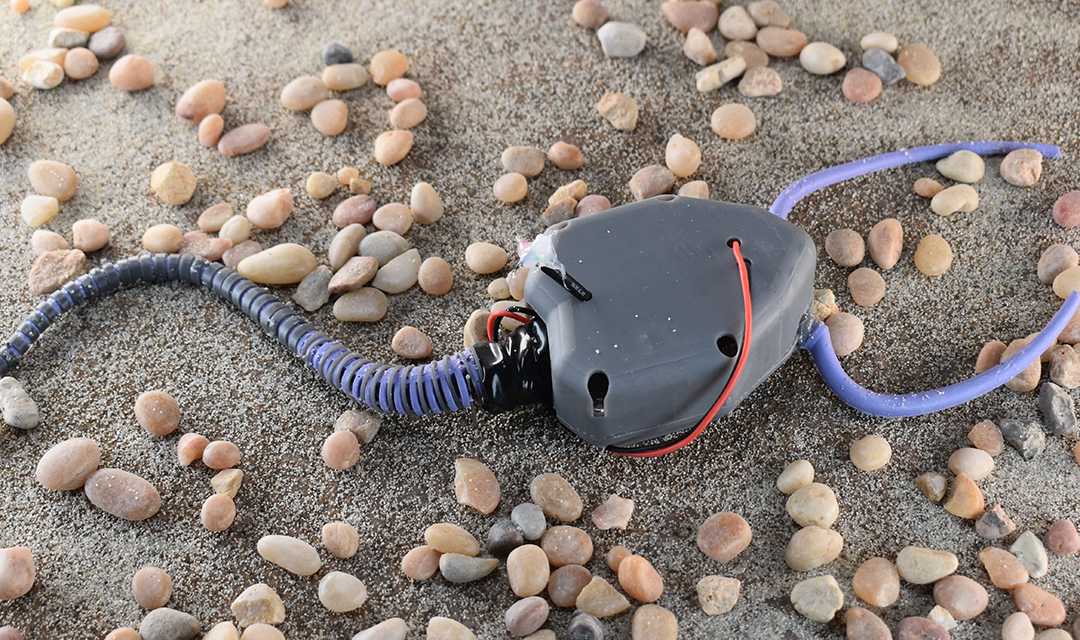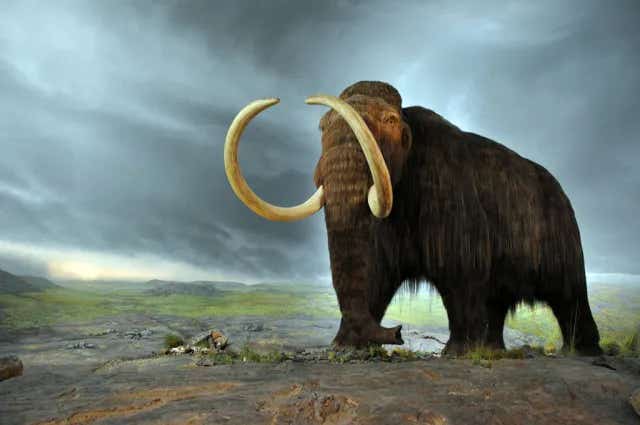Researchers build robot based on creature that lived nearly 500 million years ago
These flexible electronics and soft materials explore the biomechanical factors that influenced evolution using extinct organisms.

This field utilizes Softbotics, which involves robotics incorporating flexible electronics and soft materials, to explore the biomechanical factors that influenced evolution using extinct organisms. (CREDIT: Carnegie Mellon University)
Humans have existed on Earth for around 300,000 years, a mere blip in the planet's history. This short span represents just 0.007% of Earth's timeline, making our presence relatively recent in the grand scheme of things.
Consequently, the animal kingdom we observe today, which shapes our understanding of evolution and inspires modern mechanical systems, is only a fraction of the creatures that have inhabited the Earth throughout history.
In a bid to expand our knowledge of animal design and movement, researchers from Carnegie Mellon University's Department of Mechanical Engineering, in collaboration with paleontologists from Spain and Poland, are delving into a new field called Paleobionics.
This field utilizes Softbotics, which involves robotics incorporating flexible electronics and soft materials, to explore the biomechanical factors that influenced evolution using extinct organisms.
Related Stories
"Our goal is to bring biological systems back to life through Softbotics, allowing us to mimic them and understand their operations," explained Phil LeDuc, a professor of mechanical engineering.
Led by LeDuc and Carmel Majidi, a research team has revived pleurocystitids, a marine organism that existed approximately 450 million years ago. These creatures, part of the echinoderm class which includes modern starfish and sea urchins, were among the earliest echinoderms capable of movement using a muscular stem.
Despite lacking a modern-day equivalent, pleurocystitids are of interest to paleontologists due to their significance in echinoderm evolution.
"Softbotics offers another avenue to advance science, utilizing soft materials to construct flexible robot limbs and appendages. By examining the evolutionary timeline of animal development, we gain insights into fundamental principles of biology and nature. We're constructing robot analogues to study the changes in locomotion," said Majidi, the lead author and a professor of mechanical engineering.
Guided by fossil evidence, the team utilized a combination of 3D printed elements and polymers to replicate the flexible columnar structure of the pleurocystitids' appendages, creating the Rhombot.
The team used fossil evidence of the pleurocystitids to guide their design and a combination of 3D printed elements and polymers to mimic the flexible columnar structure of the moving appendage to build the robot. (CREDIT: Carnegie Mellon University)
Their experiments revealed that pleurocystitids likely moved across the seafloor aided by a stem that propelled them forward, with wide sweeping motions being the most effective. Moreover, increasing the stem's length significantly enhanced the creature's speed without requiring additional energy expenditure.
"Researchers in the bio-inspired robotics community must select key features from organisms to incorporate into their designs over time. We must determine effective locomotion strategies to mobilize our robots. For instance, does a starfish-inspired robot truly need five limbs for locomotion, or can we devise a more efficient strategy?" remarked Richard Desatnik, a Ph.D. candidate and co-first author.
Pleurocystitids, thrashing their way from Ordovician seafloors to the modern day via the rhombot. (CREDIT: Desatnik et al. 2023) (CC BY-NC-ND-4.0))
The team's investigation also raises questions about how the surface on which pleurocystitids lived influenced their movement, whether it be sand or mud. Now equipped with the ability to engineer extinct organisms using Softbotics, the researchers aim to explore other creatures, including the first organisms capable of transitioning from sea to land—a feat not easily studied using conventional robot hardware.
"The prospect of resurrecting something that existed nearly 500 million years ago is inherently exciting, but what truly thrills us about this breakthrough is the wealth of knowledge it promises to unlock. We're not merely examining fossils; we're striving to deepen our understanding of life by collaborating with remarkable paleontologists," emphasized LeDuc.
This field utilizes Softbotics, which involves robotics incorporating flexible electronics and soft materials, to explore the biomechanical factors that influenced evolution using extinct organisms. (CREDIT: Carnegie Mellon University)
The application of Softbotics to resurrect ancient organisms like pleurocystitids offers a fascinating glimpse into prehistoric life. By mimicking their movements and studying their biomechanics, researchers hope to shed light on the evolutionary processes that have shaped life on Earth.
This interdisciplinary approach, marrying robotics with paleontology, exemplifies the ingenuity of scientific inquiry and the potential for groundbreaking discoveries when diverse fields collaborate.
For more science and technology news stories check out our New Innovations section at The Brighter Side of News.
Note: Materials provided above by The Brighter Side of News. Content may be edited for style and length.
Like these kind of feel good stories? Get the Brighter Side of News' newsletter.
Joshua Shavit
Science & Technology Writer | AI and Robotics Reporter
Joshua Shavit is a Los Angeles-based science and technology writer with a passion for exploring the breakthroughs shaping the future. As a contributor to The Brighter Side of News, he focuses on positive and transformative advancements in AI, technology, physics, engineering, robotics and space science. Joshua is currently working towards a Bachelor of Science in Business Administration at the University of California, Berkeley. He combines his academic background with a talent for storytelling, making complex scientific discoveries engaging and accessible. His work highlights the innovators behind the ideas, bringing readers closer to the people driving progress.



